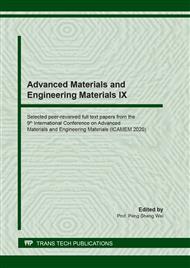p.9
p.15
p.23
p.28
p.35
p.41
p.46
p.52
p.57
Research on Microstructure and Wear Property of 45 Steel Quenched with Different Laser Power
Abstract:
The surface of 45 steel is quenched by CO2 laser with scanning speed 1000 mm/min and different laser power 1000W, 1200W, 1400W, 1600W and 1800W. Experiments are carried out to analyze microstructure, friction and wear properties of quenched 45 steel. The results show that the quenching layer thickness increases gradually with the increase of laser power,and the maximum value of quenching layer hardness increases first and then decreases. When the laser power is 1600W, the maximum hardness value is 883HV0.5. But when the laser power is 1800W, the hardness of quenching layer becomes to decrease. The reason is the surface of 45 steel becomes to melt. The wear volume increases first and then decreases too. When laser power is 1600W, the minimum wear volume is 0.08mm3, which is 6.4% to the wear volume of 45 steel matrix without laser quenching. Therefore, better microstructure and properties of 45 steel can be obtained when laser scanning speed is 1000mm/min and laser power is 1600W.
Info:
Periodical:
Pages:
35-40
Citation:
Online since:
September 2020
Authors:
Keywords:
Price:
Сopyright:
© 2020 Trans Tech Publications Ltd. All Rights Reserved
Share:
Citation:


